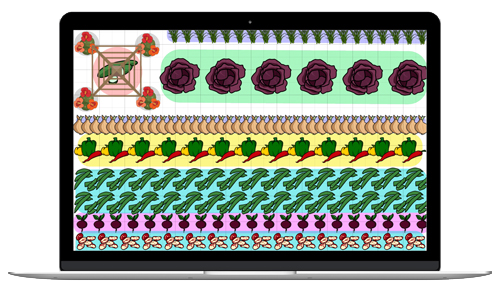
Rhododendrons are popular among gardeners with their evergreen shrubbery and early blooms.
Planting, Growing, and Pruning Rhododendrons and Azaleas
The Almanac Garden Planner - Use It Free for 7 Days!
Plan your 2025 garden with our award-winning Garden Planner.
There are more than 900 species in the Rhododendron genus, which vary greatly. It would take a whole book to understand this wide world!
You may be interested in joining the American Rhododendron Society, which runs a database with information on more than 2,000 rhododendrons and azaleas. On an annual basis, the society selects a number of rhododendrons to be awarded the Rhododendron of the Year designation, highlighting the best-performing plants for different regions.
Here is a handful of varieties that we think you’ll enjoy:
- ‘Blue Diamond’ is a dwarf evergreen rhododendron that grows to 3 feet. It blooms mid-season with violet-blue flowers. Zones 7 to 9.
- ‘Cecile’ is a vigorous azalea that grows to 7 feet and produces dark salmon-pink buds in mid-season. Zones 5 to 8.
- ‘Hydon Dawn’ is a low-growing rhododendron that actually tolerates full sun. Pale pink flowers bloom in mid-season. Zones 7 to 9.
- ‘Nova Zembla’ is an evergreen rhododendron that grows 5 to 10 feet tall and bears bright red flowers in late midseason. Zones 5 to 8.
- ‘Rosy Lights’ is an azalea that offers extra cold hardiness. It grows to 6 feet and bears deep purple-pink flowers. Zones 3 to 8.
- ‘Purple Gem’ is a dwarf rhododendron that grows to 2 feet and is an early-season bloomer. It bears small, light purple flowers. Excellent in front of a border or in a rock garden. Zones 5 to 8.
ADVERTISEMENT
We just received a gift of a yellow rhododendron in a 3-gal. pot. We have other, established rhodys n the partial shade. Where should this new one go? We are thinking of near a rock wall in a partially shady area, in a northwest location. We are in Zone 3, in the mountains.
We have a plant that a deer ate on last year. Plant has 3 flowers this year. When is appropriate time to trim the part that is dead?
As noted above, you can remove dead or damaged parts at any time.
I have 4 large mature Rhododendrons around my front porch, 3 of which are covered with blooms but the 4th is covered with flower buds that do not open. This happens every year. Otherwise the plant looks just like the other 3. Since they are all basically on the same side of the house (East/Northeast) with the same amt. of sunlight, rainfall, & (non-)fertilization I wonder if there is a logical reason why these flowers do not open.
Are you ready: You may be too good to these plants! One source suggests these causes:
- Too much shade. This is very common in North America where, in order to regulate sun and soil temperature, plants are placed in deep shade. This allows healthy, if straggly growth, but can inhibit flowering. The more light you can give a plant, the more likely it is to flower, so there is a trade-off between the need for shade and the need for light.
- The variety takes many years to flower (it does not sound like this is your situation).
- Kindness. Rhododendrons flower in order to reproduce. A contented, well-fed, well-watered, well-shaded plant may not feel any need to reproduce, as it perceives no threat to its survival. Do not feed after mid-summer, as this encourages growth at the expense of flowers. Nurserymen cut down watering in late summer to stress plants into flowering the following year.
If I could post a photo, I would. I have rhodies that dwarf my old sedan in height and length! In May and June I hear the loud, constant hum of bumblebees having a great time gathering the pollen. No gardening secrets - just luck and good sun, I guess. We are in the UP Michigan and they are sheltered from the wind by the house.
Sounds marvelous! You might inspire rhody envy…!
New shrub bought 10/5/20 covered in pink flowers. Two weeks later all the flowers were dying and now the top leaves are turning glossy brown. Why?
This sounds like it could be transplant shock, which is simply a result of the plant adjusting to its new environment—the sun, soil, water, and so on. Just be sure to not let the plant dry out while it is still adapting, especially during the increasingly warmer days of summer.
We have grassy bank area in our garden that is unusable so have decided to brighten it up by planting Rhododendrons. We’d like to plant ones that spread and will cover the area. We live in Hampshire so it’s cold winters and hot summers. What would you advise? Thank you












